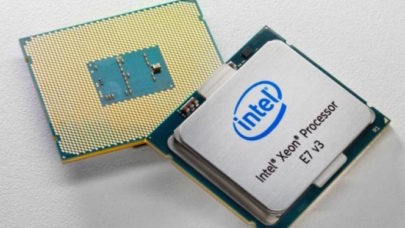
Optimizing Codes for Heterogeneous HPC Clusters Using OpenACC
July 3, 2017
Looking at the Top500 and Green500 ranks, one clearly realizes that most HPC systems are heterogeneous architecture using COTS (Commercial Off-The-Shelf) hardware, combining traditional multi-core CPUs with massively parallel accelerators, such as GPUs and MICs. With processor frequencies now hitting a solid wall, the only truly open avenue for riding today the Moore’s law is increasing hardware parallelism in several different ways: more computing nodes, more processors in each node, more cores within each processor, and longer vector instructions in each core. Read more…

Code Modernization: Bringing Codes Into the Parallel Age
June 8, 2017
The ways that advanced computing performance depends on more – much more – than the processor take many forms. Regardless of Moore’s Law validity, it’s Read more…

HPC Startup Advances Auto-Parallelization’s Promise
January 23, 2017
The shift from single core to multicore hardware has made finding parallelism in codes more important than ever, but that hasn't made the task of parallel progr Read more…

MIT’s Multicore Swarm Architecture Advances Ordered Parallelism
July 21, 2016
A relatively new architecture explicitly designed for parallelism – Swarm – based on work at MIT has shown promise for substantially speeding up classes of Read more…

James Reinders: Parallelism Has Crossed a Threshold
February 4, 2016
Is the parallel everything era here? What happens when you can assume parallel cores? In the second half of our in-depth interview, Intel's James Reinders discu Read more…

A Conversation with James Reinders
January 21, 2016
As Chief Evangelist of Intel Software Products, James Reinders spends most of his working hours thinking about and promoting parallel programming. He’s ess Read more…

Intel Haswell-EX Server Sets STAC-A2 Performance Record
September 2, 2015
Intel has reasserted its prominence on a subset of financial benchmarks designed to evaluate platforms for the pricing and market risk analytics. More powerful Read more…

COSMOS Team Achieves 100x Speedup on Cosmology Code
August 24, 2015
One of the most popular sessions at the Intel Developer Forum last week in San Francisco, and certainly one of the most exciting from an HPC perspective, broug Read more…

- Click Here for More Headlines

Whitepaper
Transforming Industrial and Automotive Manufacturing
In this era, expansion in digital infrastructure capacity is inevitable. Parallel to this, climate change consciousness is also rising, making sustainability a mandatory part of the organization’s functioning. As computing workloads such as AI and HPC continue to surge, so does the energy consumption, posing environmental woes. IT departments within organizations have a crucial role in combating this challenge. They can significantly drive sustainable practices by influencing newer technologies and process adoption that aid in mitigating the effects of climate change.
While buying more sustainable IT solutions is an option, partnering with IT solutions providers, such and Lenovo and Intel, who are committed to sustainability and aiding customers in executing sustainability strategies is likely to be more impactful.
Learn how Lenovo and Intel, through their partnership, are strongly positioned to address this need with their innovations driving energy efficiency and environmental stewardship.
Download Now
Sponsored by Lenovo
Whitepaper
How Direct Liquid Cooling Improves Data Center Energy Efficiency
Data centers are experiencing increasing power consumption, space constraints and cooling demands due to the unprecedented computing power required by today’s chips and servers. HVAC cooling systems consume approximately 40% of a data center’s electricity. These systems traditionally use air conditioning, air handling and fans to cool the data center facility and IT equipment, ultimately resulting in high energy consumption and high carbon emissions. Data centers are moving to direct liquid cooled (DLC) systems to improve cooling efficiency thus lowering their PUE, operating expenses (OPEX) and carbon footprint.
This paper describes how CoolIT Systems (CoolIT) meets the need for improved energy efficiency in data centers and includes case studies that show how CoolIT’s DLC solutions improve energy efficiency, increase rack density, lower OPEX, and enable sustainability programs. CoolIT is the global market and innovation leader in scalable DLC solutions for the world’s most demanding computing environments. CoolIT’s end-to-end solutions meet the rising demand in cooling and the rising demand for energy efficiency.
Download Now
Sponsored by CoolIT
Advanced Scale Career Development & Workforce Enhancement Center
Featured Advanced Scale Jobs:
HPCwire Resource Library
HPCwire Product Showcase
© 2024 HPCwire. All Rights Reserved. A Tabor Communications Publication
HPCwire is a registered trademark of Tabor Communications, Inc. Use of this site is governed by our Terms of Use and Privacy Policy.
Reproduction in whole or in part in any form or medium without express written permission of Tabor Communications, Inc. is prohibited.
























